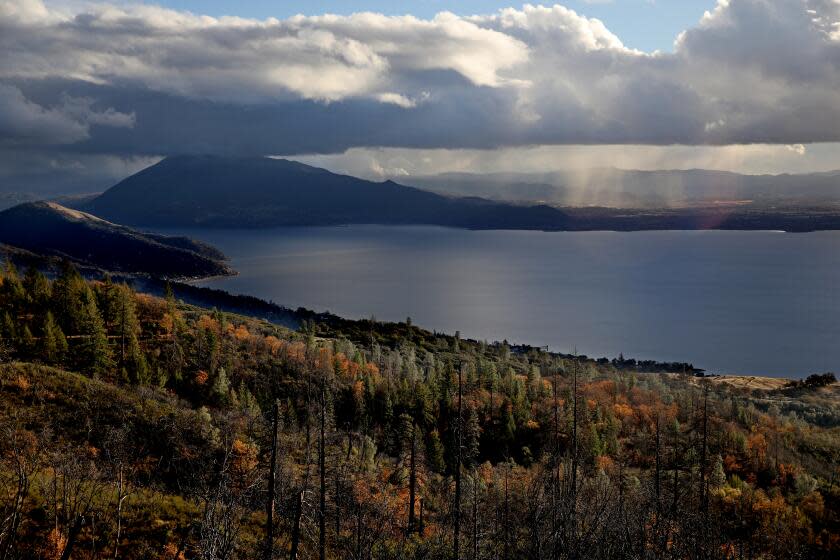Shocking before-and-after photos show California's famed Clear Lake turn bright green

Clear Lake, one of California's oldest and most-visited lakes, is not so clear anymore after an algal bloom turned the water cloudy and green.
Images from NASA underscore the dramatic change in water quality at the Northern California tourist destination. Clear Lake is in Lake County about 120 miles north of San Francisco.
The bloom may be comprised of blue-green algae, or cyanobacteria, which produce microcystin, "a potent toxin that can irritate the skin and cause liver and kidney damage," the National Aeronautics and Space Administration wrote.
The image below shows the lake on May 16, 2023, (left) and the same date this year (right). The algal levels were significantly lower at this time last year, as evidenced by the clear change in water color.
Algal blooms have been common in Clear Lake's long history, but have grown more common with human activity in the last century, according to NASA.
"Runoff from nearby farms, vineyards, faulty septic systems, gravel mines, and an abandoned open-pit mercury mine contributes to water quality issues in the lake," NASA wrote.
Additionally, they wrote, some nutrients exist in the lake bed's sediment and are mixed into the water by waves and nonnative carp.
The NASA satellite image below shows the lake in greater detail. The main algal bloom, in the top left of the lake, is dark and cloudy.
The image was taken May 15 during the peak of the visible bloom. Toxicity monitoring data from May 8 did not yet show the bloom, and the next sampling will not take place until June 4.
At 43,000 acres, Clear Lake is the largest natural freshwater lake in California, possibly the oldest lake in North America.
The lake is the centerpiece for several communities in the rural Lake County area, including Lakeport, Clearlake, Kelseyville, Glenhaven and several others.
The main attractions — boating, fishing and swimming — may be affected by the algal bloom for weeks to come, officials warn.
This story originally appeared in Los Angeles Times.


